Sorted by date Results 26 - 50 of 133
The advent of Highway 31 brought about rapid transportation between the hamlets and towns of the area. Motorists could now travel routes in a few hours that previously would have taken a half day, full day or multiple days to traverse. On April 5, 1934, The Atmore Advance reported the opening of the Highway 31 portion between Sardis Church Road and Canoe. All along 31, truck stops, motels and other tourist attractions began to spring to life. In Canoe, the Lighthouse was an early example of such a tourist attraction. The old Gordon Mineral...
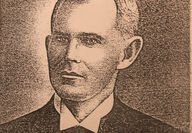
Newspapers in our area have always profiled local residents and their human interests pursuits. Yet in an era when most people were "closer to the earth" it was well thought of to cover farms and agricultural interests. It is almost a forgotten fact of local history but our area was once awash in peach orchards, produce growing and strawberry patches. The area between Canoe and Malta was no different and many farmers made their livelihood growing such crops. The Brewton Standard was one in a lon...

While walking the trails and streets of Wilcox County one could be forgiven for seeing the boundaries between the past and present becoming blurred before their very eyes. At places like Reaves Chapel, a quaint one room church on a wind-swept ridge near Gullet's Bluff, on a cold January day visions of children playing in the church yard and church members sharing dinner on the grounds was close to the mind's eye; although in our reality it was quite except for the sound of the wind whipping...

The Old Stage Road provided an artery connecting remote communities in the piney wilderness of South Alabama. The mail hack, which ran twice weekly between Mobile and Greenville brought news, company and travelers to stage stops which were strung along the road about every 16 or so miles. The Anderson stage stop was one such stop. According to Lee Peacock's Dispatches From the LP-OP of May 7, 2014, the stop was located on the Conecuh side of the Middleton Road north of the Mixonville community,...
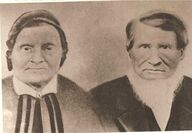
In the early days of Alabama the stage coach was king of the road. It was an era of virgin pine forests, unadulterated creeks and swampy low lands which could make travel lonely and dangerous. Many roads were constructed or improved for military purposes, such as the Old Stage Road. It has been said Highway 97 in Northwest Florida was an old British military road. The Fort Montgomery to Fort Crawford Road, which was situated high on the east bank of Murder Creek was another major transportation...

The War Between the States (Civil War) had the dual effect of altering the fortunes of men and communities alike. Prior to the war, some rural communities experienced the spring time of their existence only to later find that existence cut short by the advent of war and history. Other small communities prospered for a time after the war due to a variety of reasons and eventually succumbed to other historical, social, and economic effects years later. Still other rural communities were...
Most people are familiar with the tales of cowboys in the Old West leading herds of cattle from Texas to places such as Kansas. Movies such as Lonesome Dove have characterized cattle drives from Texas to Montana and movies such as Monte Walsh (with Tom Selleck) have characterized the ruggedness and individuality that made the American cowboy a unique breed on the stage of world history. Yet few are aware that before the Old West cowboy entered the stage there was another type of cowboy in Florida. Florida’s first cowboys were known as C...
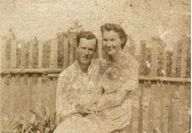
Along Pecan Lane a series of old wood frame houses provide a historical context among the modern brick homes and Flomaton Speedway. Prior to the coming of Highway 113 this street was called Sardine Road and the community was known as Little Escambia. In the years before the Flomaton Speedway appeared a road ran parallel to the current highway. Some residents of the area wanted to call the community North Flomaton but the name Little Escambia became affixed to this quite roadside community which...

The decades that followed the War Between the States saw dramatic changes in the way people conducted day-to-day business in relation to shopping and trade. Around the time of the war, salesmen would ride the rails or walk to the various towns carrying a variety of goods on their back or offering to sharpen scissors or knives for housewives. After the war, with the advent of sharecropping, the appearance of the old country store became a fixture in the rural South. During the same era older...

Alabama's rivers have always been a major transportation artery for commerce and travelers. In the early days of Alabama, flat boats and canoes made the journey down rivers and creeks carrying news and supplies to far flung settlements and villages. Before the War Between the States, the advent of the steam powered river boat brought rapid transport to cotton and commerce. Stories of the ships created an allure of romance and adventure. Sometimes the ships gave rise to legends even bigger than...

Heck Rumbley of Monroe County, Alabama set down for an interview with The Monroe Journal in 1966 regarding his father, Thomas A. Rumbley, who was a surveyor, a tax collector and a Confederate veteran who lived into his 90s. His father, Lt. Thomas A. Rumbley served in Company H, 17th Alabama. He joined at Old Scotland. Many tales of The War Between The States were recounted to his son, yet it was one amazing story that created a decades long question for some in the Monroe County area. In 1893,...
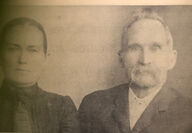
It's a time honored tradition on Thanksgiving to enjoy a meal with loved ones and, as we age, traditions with loved ones become all the sweeter as the years pass by like a river. Yet it's easy to take for granted that a hot meal, with turkey and fixings, will be waiting when we come out of the woods at dinner time on that special day. It's special for a lot of reasons but not the least of which is the easing of the climate from the oppressive summer to the milder fall, the slight changing of...

The use of Williams Station's original cemetery continued through the first decade of the 20th century. Thereafter, many bodies were removed to Oak Hill Cemetery. Yet in the quite, lonely cemetery at the west end of Church Street rests the memories of an earlier time. Some of the graves were merchants and business owners. Some were saw mill workers who came to the Williams Station earn a living. One example is Nick Reaves. According to The Atmore Record of November 17, 1910, the young man...
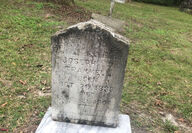
The Williams Station Cemetery is situated at the western end of Church Street in Atmore. Yet to find the location it becomes necessary to search and look beyond the houses at the western extreme of the street. A glancing scan soon takes the searcher down a tiny sidewalk which leads to the enclosed graveyard and, as if passing through time and space, the traveler soon finds a gem of local history among the stones erected to memories of those who passed long ago. Among those faded memories is that...
It's a small cemetery unknown to many and forgotten by others. Yet the narrow sidewalk which leads to an old cemetery at the western end of Church Street in Atmore holds history and heartbreak beneath its fading tombstones and grass covered gravesites. Some of William Station's popular early residents are buried here. Others consist of infants who passed early in life. Unmarked graves for mill workers, farmers, laborers, bankers and merchants lay side by side, each grave marked by depressions in the ground although many also have markers....

According to the dictionary, collective memory "refers to the shared pool of memories, knowledge and information of a social group that is significantly associated with the group's identity." For the American South, our collective memory is just another piece of the mosaic that binds us together. Spooky traditions, ghost stories and tall tales told around the camp fire have served to hold these stories together for generations. Much of our Southern folklore traces to the Scotch-Irish who...
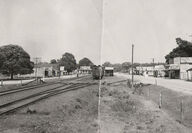
A slender young man in dusty overalls walked across the plank sidewalk from the busy wooden structure in downtown Williams Station known as the Carney Commissary in the early 1890s and towards his room at the Magnolia Boarding House just across the tracks. Nicholas Ashley, the commissary clerk, had just handed the young man a letter from family in some distant county, as in the commissary served as the William's Station Post Office as well as a mercantile store for locals. The letter carried...

Mrs. Annie C. Waters describes Sardine as "The northeastern area of Township 2N, Range 7E and has at different times been known as Sardine, Magnolia, and Stanley Cross Roads." Yet beyond the legal description of an area, a rich, deep history runs in the undercurrents which flow through time. Sizemore Creek, as mentioned in earlier articles, has witnessed history flowing beneath its bridges for generations. Yet Sizemore Creek covers a long stretch which extends from its intersection with Big...

The ghosts of our not so distant past haunt us every day. Not in the sense of apparitions and spirits floating through the air necessarily but the haunting is to be found off the roadsides and the backwoods where old homesites, cemeteries and memories collide in a crescendo of the past following down the river of time into the sea of eternity. It's my speculation that these people of the past want to be remembered for the places where they lived, worshipped, loved and died and they want their...

A whisper echoing through a gentle breeze, willow trees that witnessed life and death and an old white oak that stands in silent repose while holding in her wisdom acquired over a century of being rooted near the banks. These are some of the sights and sounds of Sizemore Creek which reverberate as if in another dimension as creek goers and traffic pass on the bridge above unaware of her past. Yet just off the roadway this ancient creek seeks to pass on its secrets on to a new generation....

As the morning of September 20, 1863 began, Confederate forces stood defiant amidst the hard won ground of the previous day's fighting. Longstreet's men now supported Bragg's fledgling forces and Lt. Gen. Nathan Bedford Forrest stood prepared to deliver a crushing blow to Rosecrans forces. At 10:15 am Bragg ordered a full frontal assault on the Union lines. As the frontal attack gained momentum Rosecrans made a fateful decision. At about 11 a.m., Rosecrans ordered General T.J. Wood to replace...

On a recent trip to Conecuh County I found myself with a few minutes to spare so I stopped by the library in Evergreen to do some light research on a McKinley ancestor who had lived in Conecuh in the early 1900s but about which I knew little else about the gentleman. Ms. Sherry Johnston, who is always a wealth of information on the area, gave me some valuable information on Mr. Pinkney McKinley and I greatly enjoyed my visit with her and Ms. Mattie McMillan from Newton, Mississippi who were in...
After leaving the Antioch Primitive Baptist Church Cemetery, we continued our way to Booker’s Mill. Relying on GPS proved to be a fallacy in the journey in that it took us down a dirt lane called Twin Bridges Road which led nowhere but it did produce a kindly gentleman who had us follow him to the mill site. Upon arriving at Booker’s Mill, it seemed as though the entire place was a public park or some sort of historical exhibit, but it is actually the private property of the Stinson family who purchased the property in the 1970s and have add...
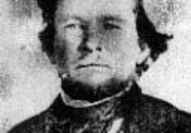
The history of Southwest Alabama is like a patch work quilt composed of the lives of everyone who has called the area home. Each patch of the quilt tells a story and adds color to our area's history. No single area of this "quilt" tells a greater story than the history of Monroe County. History would not be as interesting if it were only composed of dates and names. The story behind the history is always more fascinating and as Mark Twain once wrote; "truth (or fact) is always stranger than...
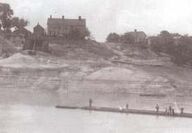
The Alabama River is a place of rich history and ancient cultures. Native Americans roamed the rivers in a time before the arrival of Europeans and thereafter Europeans mapped and settled the area. Later, as the area became a new frontier for the US, another round of settlers called the area home. It is also likely that men such as William Travis travelled passed Gainestown Landing by river boat as he conducted his profession as an attorney-perhaps with a court hearing in Mobile or elsewhere-...